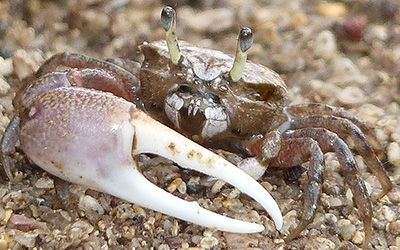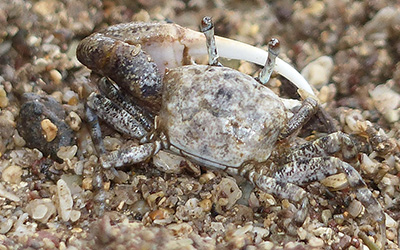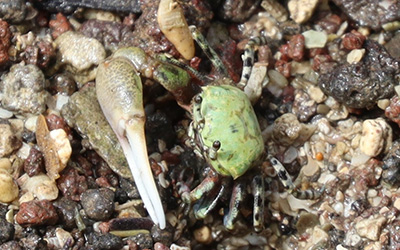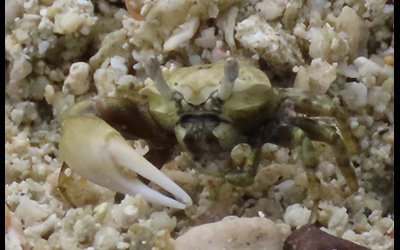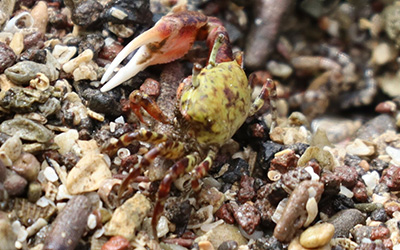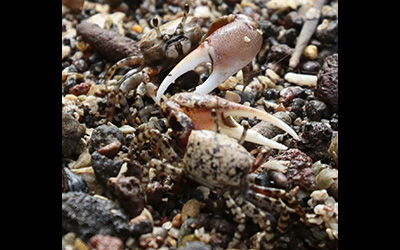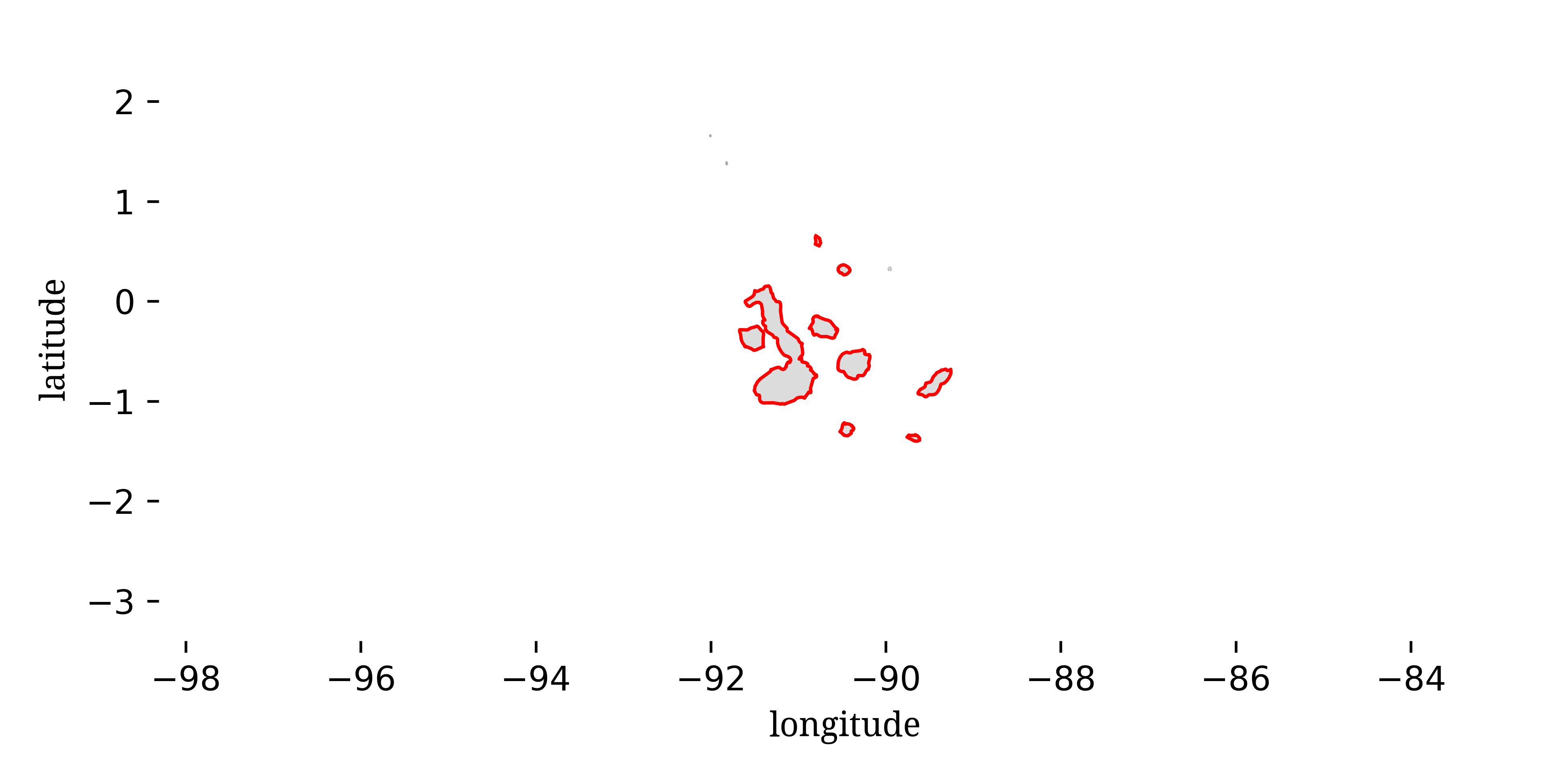
This guide is designed for identification “in the field” where you might be looking at live crabs by eye or through binoculars or from photographs. I will generally try to avoid characters that will require you to physically catch the crab, although I may mention a few for secondary verification. It does not include the more strict taxonomist-style characters that may only be visible under a microscope or via dissection. It is also assumed that the individuals are living, as death (and even capture) can cause dramatic color change.

This is a guide to the fiddler crabs of the Galápagos Islands. There are only two species of fiddler crabs found on the islands.
In a bit of taxonomic irony, Leptuca helleri is only found in the Galápagos, while Minuca galapagensis is also found on the coast of South America. The scientific literature suggests that the two species never intermix on the islands; at any given location you will find one or the other, but apparently not both. In fact, there is some suggestion they rarely are found even on the same island. If this is true, based on iNaturalist observations one might expect to find the following pattern among the islands:
The carapace of Minuca galapagensis is usually white or cream, although it can be dull brown, orange, yellow, or a mix. The large claw tends to be orange (sometimes more yellow-orange, sometimes more red-orange).
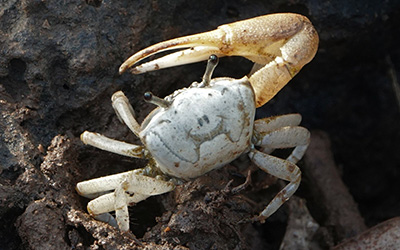
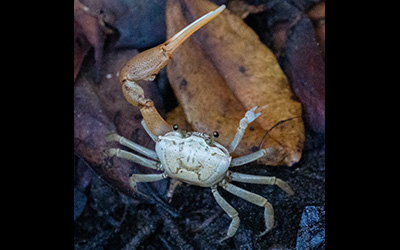
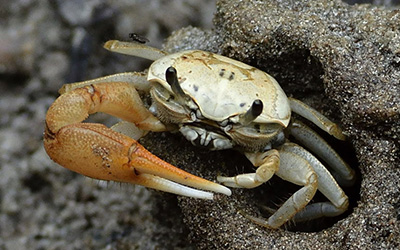
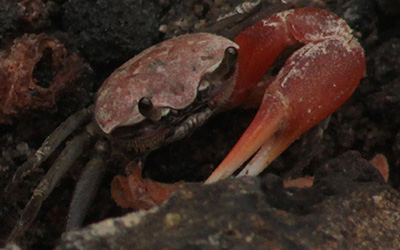
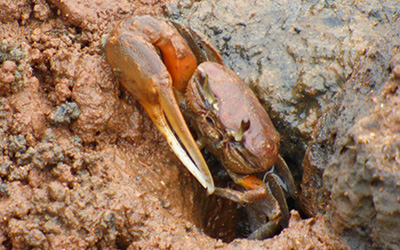
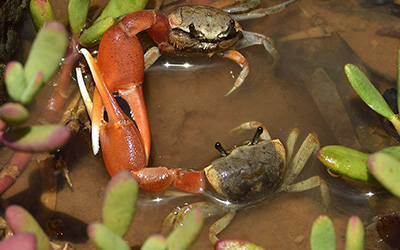
Although it can be hard to judge in photos, Minuca galapagensis is almost twice the size of Leptuca helleri, reaching about 2–2.5 cm (1 inch) in width, while Leptuca helleri is generally between 1–1.5 cm (closer to ½ inch).
A final subtle difference is that the eyes of Minuca galapagensis are generally farther apart (relative to the width of the carapace) than those of Leptuca helleri, but this is difficulty to judge in most circumstances.
Like Minuca galapagensis, Leptuca helleri may also be white or cream in color, but is frequently instead a pale green. The large claw of Leptuca helleri tends to be more white (rather than orange), often with some dark purple. In general, darker crabs that lack orange are probably Leptuca helleri rather than Minuca galapagensis.
